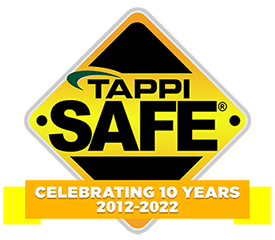 Search
Search
Use the search bar or filters below to find any TAPPI product or publication.
Filters
Content Type
Publications
Level of Knowledge
Collections
Journal articles

Magazine articles

Synthesis of filtrate reducer from biogas residue and its application in drilling fluid, TAPPI Journal March 2020
ABSTRACT: Biogas residues (BR) containing cellulose and lignin are produced with the rapid development of biogas engineering. BR can be used to prepare the filtrate reducer of water-based drilling fluid in oilfields by chemical modification. BR from anaerobically fermenting grain stillage was alkalized and etherified by caustic soda and chloroacetic acid to prepare filtrate reducer, which was named as FBR. The long-chain crystalline polysaccharides were selected as dispersing agents (DA), and the water-soluble silicate was used as the cross-linking agent. After the hot rolling of FBR in saturated saltwater base mud for 16 h at 120°C, the filtration loss was increased from 7.20 mL/30 min before aging to 8.80 mL/30 min after aging. Compared with the commercial filtrate reducers, FBR had better tolerance to high temperature and salt, and lower cost.
Journal articles

Magazine articles

Lignin-based resins for kraft paper applications, TAPPI Journal November 2019
ABSTRACT: We investigated miscanthus (MS) and willow (W) lignin-furfural based resins as potential reinforce-ment agents on softwood and hardwood kraft paper. These resins might be sustainable alternatives to the commercial phenolformaldehyde (PF) resins. Phenol is a petrochemical product and formaldehyde has been classified as a carcinogen by the U.S. Environmental Protection Agency. The lignin used in this study was derived from hot water extraction (160ºC, 2 h) of MS and W biomass, and may be considered sulfur-free. These biorefinery lignins were characterized for their chemical composition and inherent properties via wet chemistry and instrumental techniques. The resin blends (MS-resin and W-resin) were characterized for their molecular weight, thermal behavior, and mechanical properties. Mechanical properties were measured by the resin’s ability to reinforce softwood and hard-wood kraft papers. The effect of adding hexamethylenetetramine (HMTA), a curing agent, to the resin was also examined. Mixtures of PF and lignin-based resins were investigated to further explore ways to reduce use of non-renewables, phenol, and carcinogenic formaldehyde. The results show that lignin-based resins have the potential to replace PF resins in kraft paper applications. For softwood paper, the highest strength was achieved using W-resin, without HMTA (2.5 times greater than PF with HMTA). For hardwood paper, MS-resin with HMTA gave the highest strength (2.3 times higher than PF with HMTA). The lignin-based resins, without HMTA, also yielded mechanical properties comparable to PF with HMTA.
Journal articles

Magazine articles

Exergy and sensibility analysis of each individual effect in a kraft multiple effect evaporator, TAPPI Journal October 2019
ABSTRACT: The multiple effect evaporator (MEE) is an energy intensive step in the kraft pulping process. The exergetic analysis can be useful for locating irreversibilities in the process and pointing out which equipment is less efficient, and it could also be the object of optimization studies. In the present work, each evaporator of a real kraft system has been individually described using mass balance and thermodynamics principles (the first and the second laws). Real data from a kraft MEE were collected from a Brazilian plant and were used for the estimation of heat transfer coefficients in a nonlinear optimization problem, as well as for the validation of the model. An exergetic analysis was made for each effect individually, which resulted in effects 1A and 1B being the least efficient, and therefore having the greatest potential for improvement. A sensibility analysis was also performed, showing that steam temperature and liquor input flow rate are sensible parameters.
Journal articles

Magazine articles

Online measurement of bulk, tensile, brightness, and ovendry content of bleached chemithermomechanical pulp using visible and near infrared spectroscopy, TAPPI JOURNAL April 2018
Online measurement of bulk, tensile, brightness, and ovendry content of bleached chemithermomechanical pulp using visible and near infrared spectroscopy, TAPPI JOURNAL April 2018
Magazine articles

Evaluating treatment processes to reduce metals concentrations in pulp and paper mill wastewaters to extremely low values, TAPPI JOURNAL, April 2001, Vol. 84(4)
Evaluating treatment processes to reduce metals concentrations in pulp and paper mill wastewaters to extremely low values, TAPPI JOURNAL, April 2001, Vol. 84(4)
Magazine articles

Deinking difficulties related to ink formulation, printing process, and type of paper, TAPPI JOURNAL, June 2000, Vol. 83(6)
Deinking difficulties related to ink formulation, printing process, and type of paper, TAPPI JOURNAL, June 2000, Vol. 83(6)
Magazine articles

Service with a smile: john d. callahan named the 1997 herman l. joachim distinguished service award winner, TAPPI JOURNAL, April 1997, Vol. 80(4)
Service with a smile: john d. callahan named the 1997 herman l. joachim distinguished service award winner, TAPPI JOURNAL, April 1997, Vol. 80(4)
Magazine articles

Theory and reality for contaminant removal curves, TAPPI JOURNAL, April 1997, Vol. 80(4)
Theory and reality for contaminant removal curves, TAPPI JOURNAL, April 1997, Vol. 80(4)
Magazine articles

The enemy within, TAPPI JOURNAL, April 1997, Vol. 80(4)
The enemy within, TAPPI JOURNAL, April 1997, Vol. 80(4)
Magazine articles

Anhydrous ammonia storage vessels in the pulp and paper industry, TAPPI JOURNAL, April 1997, Vol. 80(4)
Anhydrous ammonia storage vessels in the pulp and paper industry, TAPPI JOURNAL, April 1997, Vol. 80(4)






